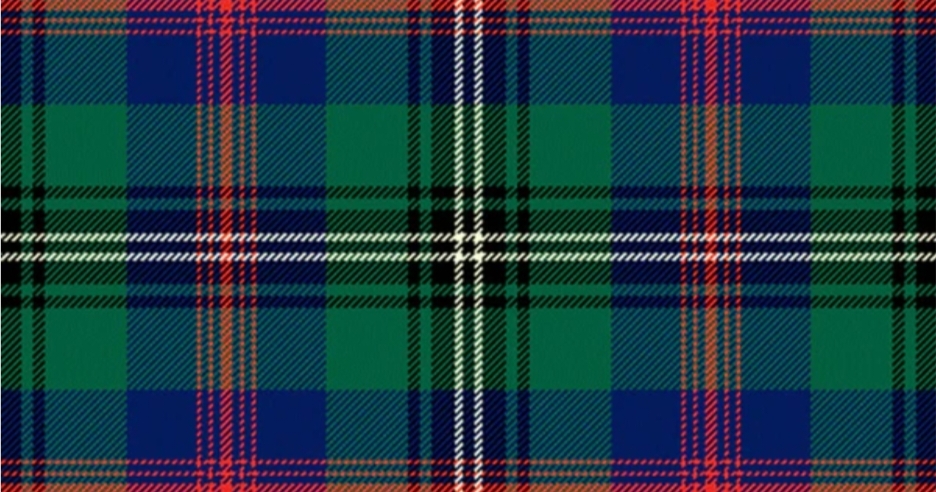The Wood Tartan, a vibrant emblem of the Wood Clan, weaves a rich tapestry of history, culture, and identity. Like all Scottish tartans, it is more than a mere pattern; it is a symbol deeply embedded in the heritage and traditions of its people. The unique blend of colors and patterns in the Wood Tartan tells a story of ancient origins, resilience through historical upheavals, and a revival that brings it into contemporary relevance. From the dense forests and rolling hills of Scotland to modern fashion runways and cozy home interiors, the Wood Tartan connects the past with the present, embodying a timeless link to Scottish ancestry. This comprehensive exploration delves into the origins, symbolic design elements, historical evolution, and modern applications of the Wood Tartan, illustrating how it remains a cherished symbol of pride and unity for those who bear the Wood name. Through this journey, we will uncover the layers of meaning woven into each thread of the Wood Tartan, celebrating its enduring legacy and continued significance in today’s world.
Historical Background of Wood Tartan
The Wood Clan’s origins can be traced back to the early medieval period in Scotland, with the name ‘Wood’ deriving from the Old English word ‘wudu,’ meaning ‘wood’ or ‘forest,’ suggesting that the clan’s early ancestors lived near or within wooded areas. The clan has historical connections to regions such as Fife and Angus, where they established themselves as a prominent family. Over the centuries, the Wood Clan played various roles in Scottish history, from local chieftains to participants in significant historical events. The tradition of clan tartans, including the Wood Tartan, began to take shape in the late 16th and early 17th centuries. Initially, tartans were regional rather than clan-specific, with patterns and colors often linked to the weaver’s locality. However, as clan identities strengthened, specific tartans began to be associated with particular families. The Wood Tartan emerged during this period, becoming a symbol of the clan’s identity and heritage.
The Symbolic Design Elements of Wood Tartan
Color Symbolism
The colors in the Wood Tartan hold significant meaning. Traditionally, tartans use a combination of colors to represent various aspects of the clan’s heritage and values. The Wood Tartan typically features shades of green, blue, and brown. Green often symbolizes the forests and natural landscapes, reflecting the clan’s connection to their wooded homelands. Blue can represent loyalty and steadfastness, qualities valued by the clan. Brown may symbolize the earth and resilience, highlighting the clan’s enduring presence and strength.
Pattern and Weave
The pattern of the Wood Tartan is characterized by a balanced interplay of stripes and checks, creating a harmonious design. The specific arrangement of these elements is unique to the Wood Tartan, making it easily recognizable. The weave of the tartan, traditionally crafted from wool, ensures durability and comfort, suitable for the Scottish climate. The intricate design showcases the skill and craftsmanship of the weavers, preserving traditional techniques passed down through generations.
The Evolution of Wood Tartan Through Time
Early Usage and Significance
In its early history, the Wood Tartan was primarily worn by clan members as a symbol of identity and solidarity. It was used in various forms of clothing, including kilts, plaids, and shawls. The tartan served not only as a practical garment but also as a means of expressing loyalty to the clan. During gatherings and ceremonies, the tartan reinforced the bonds between clan members, strengthening their sense of community.
Modern Revival and Adaptation
In the modern era, the Wood Tartan has experienced a revival, with renewed interest in Scottish heritage and traditions. The tartan is now used in a variety of contemporary applications, from fashion to home decor. Modern designers have embraced the tartan’s timeless appeal, incorporating it into clothing lines, accessories, and interior design. This adaptation has allowed the Wood Tartan to remain relevant, appealing to new generations while honoring its historical roots.
Wood Tartan in Contemporary Fashion
Traditional Attire
Traditional Scottish attire, featuring the Wood Tartan, continues to be popular for formal occasions and cultural events. Kilts, sashes, and shawls made from the Wood Tartan are worn with pride by clan members and those with an affinity for Scottish heritage. These garments are often seen at weddings, Highland games, and other celebrations, showcasing the tartan’s enduring appeal.
Modern Interpretations
Contemporary fashion has embraced the versatility of the Wood Tartan, incorporating it into a range of modern designs. Designers have experimented with the tartan, creating stylish and innovative clothing that blends tradition with modernity. From tailored suits to casual wear, the Wood Tartan has found its place in the fashion industry, appealing to a global audience. Accessories such as scarves, ties, and handbags also feature the tartan, offering stylish options for those wishing to incorporate a touch of Scottish heritage into their wardrobe.
The Cultural Significance of Wood Tartan
Clan Identity and Pride
For members of the Wood Clan, the tartan is a powerful symbol of identity and pride. It connects them to their ancestors and to each other, reinforcing their shared heritage. Wearing the Wood Tartan is a way of honoring the past and celebrating the clan’s legacy. It serves as a reminder of the values and traditions that have been passed down through generations.
Scottish Festivals and Gatherings
The Wood Tartan is prominently featured at Scottish festivals and gatherings, where it is celebrated as part of the wider tapestry of Scottish culture. Events such as the Highland games, clan gatherings, and Burns Night suppers provide opportunities for clan members to come together and celebrate their heritage. The tartan is worn with pride, serving as a visual representation of the clan’s presence and participation in these cultural traditions.
Wood Tartan in Home Decor
Traditional and Modern Applications
The appeal of the Wood Tartan extends beyond clothing, finding its place in home decor. Traditional applications include tartan blankets, cushions, and upholstery, adding a touch of Scottish charm to any home. These items are often handcrafted, reflecting the quality and craftsmanship associated with tartan weaving. Modern applications have expanded to include wallpaper, curtains, and even kitchenware, allowing the tartan to be incorporated into a variety of interior design styles.
Creating a Cozy and Inviting Space
Using the Wood Tartan in home decor can create a cozy and inviting atmosphere. The rich colors and intricate patterns add warmth and character to any space. Tartan throws and cushions can be used to accent sofas and chairs, while tartan curtains can add a touch of elegance to a room. The versatility of the tartan allows it to be used in both traditional and contemporary settings, making it a popular choice for interior design.
Crafting with Wood Tartan
DIY Projects and Crafts
The Wood Tartan is also popular in the world of crafts, offering endless possibilities for creative projects. Crafters use tartan fabric to make a variety of items, from clothing and accessories to home decor and gifts. DIY projects might include creating tartan quilts, making tartan-themed holiday decorations, or designing personalized gifts featuring the tartan. The availability of tartan fabric in various weights and textures makes it a versatile material for crafting.
Celebrating Scottish Heritage
Crafting with Wood Tartan is a way of celebrating Scottish heritage and bringing a touch of tradition into everyday life. Whether it’s making a tartan bag or sewing a tartan skirt, these projects allow individuals to connect with their roots and express their creativity. Crafting with tartan can also be a communal activity, bringing together friends and family to share in the joy of creating something special.
Finding the Perfect Wood Tartan at a Scottish Clothing Shop
For those seeking to incorporate the Wood Tartan into their wardrobe or home decor, visiting a Scottish clothing shop is an essential experience. These shops, often family-run and steeped in tradition, offer a wide range of tartan products, from classic kilts and tailored suits to contemporary accessories and bespoke home furnishings. Knowledgeable staff can provide insights into the history and significance of the Wood Tartan, helping customers select items that best represent their heritage. Scottish clothing shop also offer customization options, allowing individuals to create personalized pieces that honor their unique connection to the Wood Clan. Whether shopping in the heart of Edinburgh or online, these establishments provide an authentic and immersive way to explore and celebrate Scottish culture. The expert craftsmanship and high-quality materials found in Scottish clothing shops ensure that each piece of Wood Tartan purchased is not only beautiful but also a lasting tribute to Scottish tradition.
The Future of Wood Tartan
The future of the Wood Tartan lies in both preserving the traditions and values associated with it and embracing innovation to keep it relevant in a changing world. Efforts to document and share the history of the tartan ensure that its legacy is passed down to future generations. Educational initiatives, such as tartan exhibitions and workshops, help to keep the knowledge and skills of tartan weaving alive. By honoring the past, the Wood Tartan can continue to be a meaningful symbol of heritage and identity. At the same time, modern technology and design have expanded the possibilities for tartan use, from digital fabric printing to new applications in fashion and home decor. By blending tradition with modernity, the Wood Tartan can appeal to a broader audience, ensuring its continued significance and popularity.
Conclusion
The Wood Tartan is a rich tapestry of history, culture, and identity, representing the enduring legacy of the Wood Clan. Its vibrant colors and intricate patterns tell a story of ancient origins, resilience through historical upheavals, and a revival that keeps it relevant today. From traditional kilts and sashes to modern fashion pieces and home decor, the Wood Tartan seamlessly bridges the past and present. It is more than a mere fabric; it is a symbol of pride, unity, and heritage for those who bear the Wood name and for enthusiasts of Scottish culture. Efforts to preserve the traditions of the Wood Tartan, coupled with innovative applications in contemporary design, ensure that it remains a meaningful and cherished emblem. As we continue to celebrate and explore its significance, the Wood Tartan will undoubtedly retain its place in the tapestry of Scottish history, reflecting the timeless values and enduring spirit of the Wood Clan. Whether displayed in a Scottish clothing shop, crafted into unique gifts, or worn with pride at cultural gatherings, the Wood Tartan continues to weave its story into the fabric of Scottish heritage, connecting past, present, and future generations.










